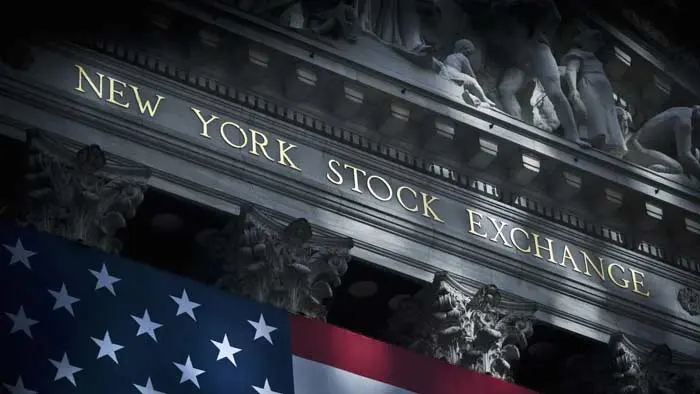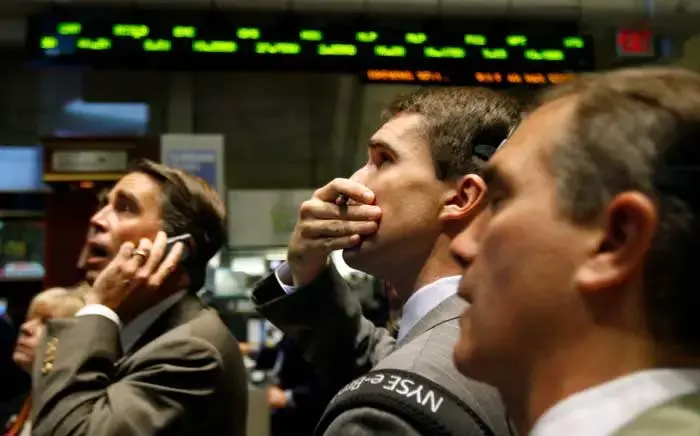Forex
+100 assets
Content table
2 mounts ago
4 min read
Written by Greenup24
The official beginning of the New York Stock Exchange (NYSE) dates back to May 17, 1792, when a group of 24 brokers gathered on Wall Street and signed an initial agreement that laid the foundation for an organized market for stock trading. This small group later established formal regulations and, on March 8, 1817, turned the NYSE into a structured financial institution.
Today, this market is recognized as a symbol of transparency, high liquidity, and diverse investment opportunities, playing a fundamental role in shaping the direction of the global economy. The presence of leading companies such as Apple, Microsoft, Amazon, and Google has made the U.S. stock market a central focus for international investors.
In this article, we will review the structure of the U.S. stock market, its major indices, historical trends, and how it influences the global economy — topics that can guide investors toward making smarter decisions. The U.S. stock market is considered one of the largest and most influential financial systems in the world. In this market, shares of publicly traded companies are bought and sold, attracting investors worldwide seeking growth and profit. Two primary stock exchanges play a key role: These two exchanges are not only centers of financial transactions but also indicators of the health and trajectory of both the U.S. and global economy. Consists of 30 of the largest and most established U.S. companies, serving as a benchmark for assessing the economic and industrial performance of the country. Includes 500 top U.S. companies across various sectors, providing a comprehensive view of the overall stock market. Primarily composed of technology and innovation-driven companies, making it especially attractive to investors due to the rapid growth of the tech sector. As one of the oldest stock market indices, the DJIA plays a crucial role in analyzing the general state of the economy. It tracks the performance of 30 large, established companies across industries such as technology, finance, manufacturing, and healthcare. Because of the importance of these companies, movements in the Dow Jones are closely monitored worldwide as an indicator of the U.S. economy’s health. During sensitive economic periods, it is a primary reference point for predicting overall market and global economic trends. The NASDAQ Composite reflects the growth and transformation of the technology sector within the U.S. economy. Leading companies such as Apple, Amazon, Google, Microsoft, and Tesla make up a significant portion of this index. This index tends to experience higher volatility than others, making it especially appealing to investors seeking faster growth opportunities. Its performance is often used to gauge the level of innovation and dynamism in the U.S. stock market. The S&P 500 is one of the most comprehensive and widely used financial indices in the world, consisting of 500 leading U.S. companies. It represents a wide range of industries, including technology, financial services, energy, healthcare, and consumer goods, covering about 80% of the total U.S. stock market value. Investors and fund managers rely on the S&P 500 as a key benchmark for evaluating both market performance and their investment portfolios. Due to its diversity and breadth, analyzing this index provides a clear and accurate picture of the overall U.S. economy and its influence on global markets. In terms of market capitalization: These figures highlight the vital role of the U.S. stock market in the global economy, demonstrating how developments in this market can significantly influence investment decisions and economic strategies worldwide. One of the darkest days in U.S. stock market history. The crash began on this day and peaked on October 29 (Black Tuesday). The crisis quickly spread to London and other major industrial nations, marking the beginning of the Great Depression, which wiped out millions of jobs and crippled the global economy for years. On this day, the DJIA plummeted by 22.6% in a single day, setting a record for the largest one-day percentage drop in history. This crash shocked investors and led to major reforms in trading structures and regulations. It also served as a stark reminder of how vulnerable markets can be even during periods of economic expansion. Following the 9/11 terrorist attacks, the NYSE was closed for four days. When trading resumed, over $1.4 trillion in market value was lost within just five days — the largest loss in NYSE history. This event underscored the profound impact political and security crises can have on financial markets. On this day, the DJIA plunged about 9% in a single session, marking the largest intraday drop in history. The event was attributed to algorithmic trading and high-speed order executions, leading to the introduction of new safeguards and regulations for electronic trading systems. As the coronavirus pandemic spread globally, the NYSE closed its physical trading floor for the first time in history, moving to fully electronic trading. This marked the beginning of a new era of digital transformation in financial markets, demonstrating the market’s ability to rapidly adapt during global crises. The U.S. stock market, as the world’s largest and most influential financial market, holds a unique position in the international economy. Beyond providing vast investment opportunities, it is deeply affected by political events, economic shifts, and technological innovations, requiring investors to have knowledge, experience, and well-defined strategies to navigate it successfully. By studying historical trends, key indices, and market behavior, investors can gain a clearer understanding of market volatility and potential opportunities. However, success in this field depends not only on theoretical knowledge but also on choosing a reliable and professional broker, which plays a crucial role in the overall investment experience. At Greenup24.com, we strive to provide a secure and transparent platform for traders — a place where you can access advanced tools, expert support, and up-to-date educational resources to enter the market with greater confidence.The U.S. Stock Market: The Beating Heart of the Global Economy
Key U.S. Stock Market Indices

Dow Jones Industrial Average (DJIA)
S&P 500
NASDAQ Composite
Dow Jones Industrial Average (DJIA)
NASDAQ Composite
S&P 500
History and Market Value
Major Historical Events in the U.S. Stock Market

October 24, 1929 — Black Thursday and the Start of the Great Depression
October 19, 1987 — Black Monday
September 11, 2001 — Trading Halt After Terrorist Attacks
May 6, 2010 — The Flash Crash
March 23, 2020 — COVID-19 and the Market’s Digital Shift
Major Historical Market Trends
Conclusion

